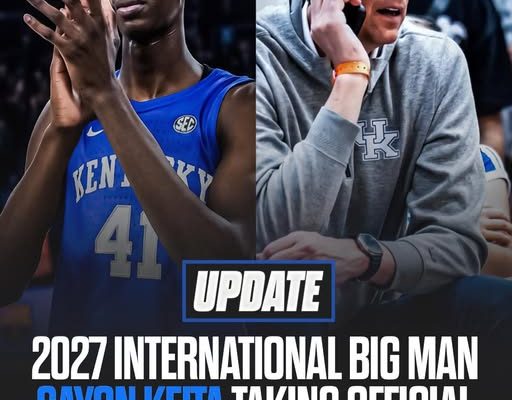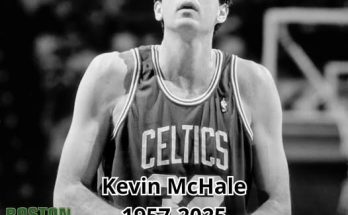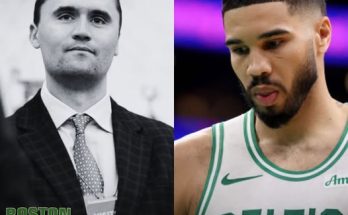In the world of high school basketball, few names have risen as rapidly and intriguingly as that of Keita, the elite international talent who has scouts and analysts across North America and beyond buzzing with excitement. With his fluid athleticism, polished skillset, and remarkable poise for his age, Keita is firmly considered one of the top international prospects currently playing in the United States. What makes his story even more fascinating is his exploration of a reclassification to the Class of 2026, a strategic move that could shift the recruiting landscape and accelerate his journey toward professional basketball. The buzz surrounding Keita isn’t manufactured hype—it’s rooted in consistent performances, standout showings at major showcases, and a skillset that fits perfectly into the modern style of play. Standing at 6-foot-9 with a lean, agile frame, Keita possesses the kind of versatility that college coaches and NBA scouts covet. He can run the floor like a wing, defend multiple positions, and score from anywhere on the court. His international background gives him an edge in terms of basketball IQ and adaptability, as he has been trained under different systems and philosophies that emphasize ball movement, spacing, and team-first basketball.
Keita first made waves playing in FIBA competitions where he represented his home country and immediately caught the eyes of talent evaluators. His ability to dominate against older and more physically mature competition showcased not just his talent, but also his competitiveness and mental toughness. These performances led to his recruitment to a prestigious prep school in the United States where he’s continued to evolve under elite coaching, advanced strength and conditioning programs, and regular exposure to high-level competition. His transition to the American high school circuit has been seamless. Against some of the top prep school teams in the country, Keita has stood out not only because of his skill but also because of his motor and intensity. He consistently stuffs the stat sheet—racking up points, rebounds, assists, blocks, and steals—without ever forcing the game. He plays within the flow of the offense but knows when to assert himself. On defense, he has the rare ability to switch onto guards while protecting the rim as a secondary shot blocker. That combination of lateral quickness and interior presence is exceedingly rare for a player his age.
One of the more intriguing aspects of Keita’s journey is the current conversation around reclassification. If he moves to the Class of 2026, it could change the recruiting timeline not only for him but for several programs banking on top-tier frontcourt talent in upcoming classes. For those unfamiliar, reclassification allows a student-athlete to move up or down a graduating class by adjusting their academic schedule. In Keita’s case, reclassifying to 2026 would provide him with an additional year of development and potentially improve his draft stock. It’s a move that’s been used effectively by other top-tier prospects in the past—players who wanted more time to hone their skills, grow physically, and better prepare for the transition to college or professional basketball. The decision to reclassify is not one made lightly. It involves careful planning with academic advisors, coaches, and family. For Keita, the move is being considered with a long-term lens. He is not merely chasing short-term headlines or immediate acclaim. Every indication from those close to him suggests that he’s prioritizing his growth as a player and a person, recognizing that the right path may involve patience rather than haste.
Colleges are watching Keita very closely. He has already drawn interest from blue-blood programs and rising powerhouses alike, and his recruitment is heating up. Coaches recognize that Keita’s game projects well to the college level—and beyond. His floor-spacing ability, high basketball IQ, and willingness to play defense make him a plug-and-play prospect at any high-major program. More importantly, Keita has the intangibles—leadership, humility, and resilience—that coaches value just as much as talent. His quiet confidence and team-first mindset stand out in an era where self-promotion often overshadows substance. There is something undeniably old-school about the way Keita carries himself. He rarely engages in showboating or trash talk. Instead, he lets his game do the talking. When he steps onto the court, he plays with a purpose and intensity that elevates those around him. His teammates trust him. Coaches praise him. Opponents respect him. Those qualities have not gone unnoticed by scouts who are already projecting Keita as a future first-round pick in the NBA Draft, assuming his development continues on its current trajectory.
While Keita’s future is full of promise, he remains grounded in the present. He continues to put in long hours in the gym, working on his jumper, tightening his handle, and improving his conditioning. He studies film religiously, not just of his own games but of professional players whose styles resemble his. Giannis Antetokounmpo, Kevin Durant, and Pascal Siakam are among the names he looks up to—not only for their on-court skills but also for how they’ve navigated their careers from raw prospects to established stars. Keita’s support system has played a vital role in his rise. His family, coaches, and mentors have emphasized education, discipline, and character as much as basketball excellence. They understand that for Keita to maximize his potential, he must remain focused not just on results but on the process. This mindset has served him well as he’s transitioned to new environments, new systems, and higher levels of competition. One challenge that international prospects often face is adapting to the cultural and stylistic differences of American basketball. The game is faster, more physical, and often more individualistic. But Keita has embraced that challenge. He’s managed to retain the unselfishness and fundamentals of European basketball while adapting to the athleticism and creativity of the American game. That hybrid identity makes him particularly appealing to both college and NBA scouts.



